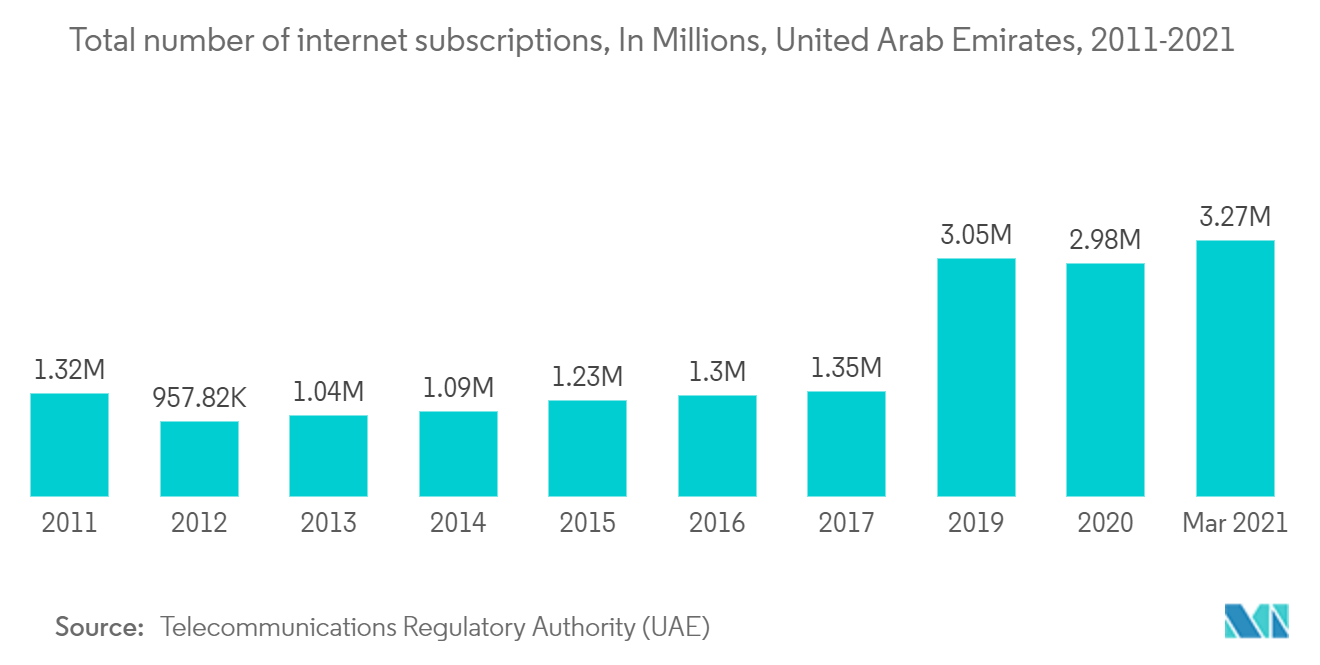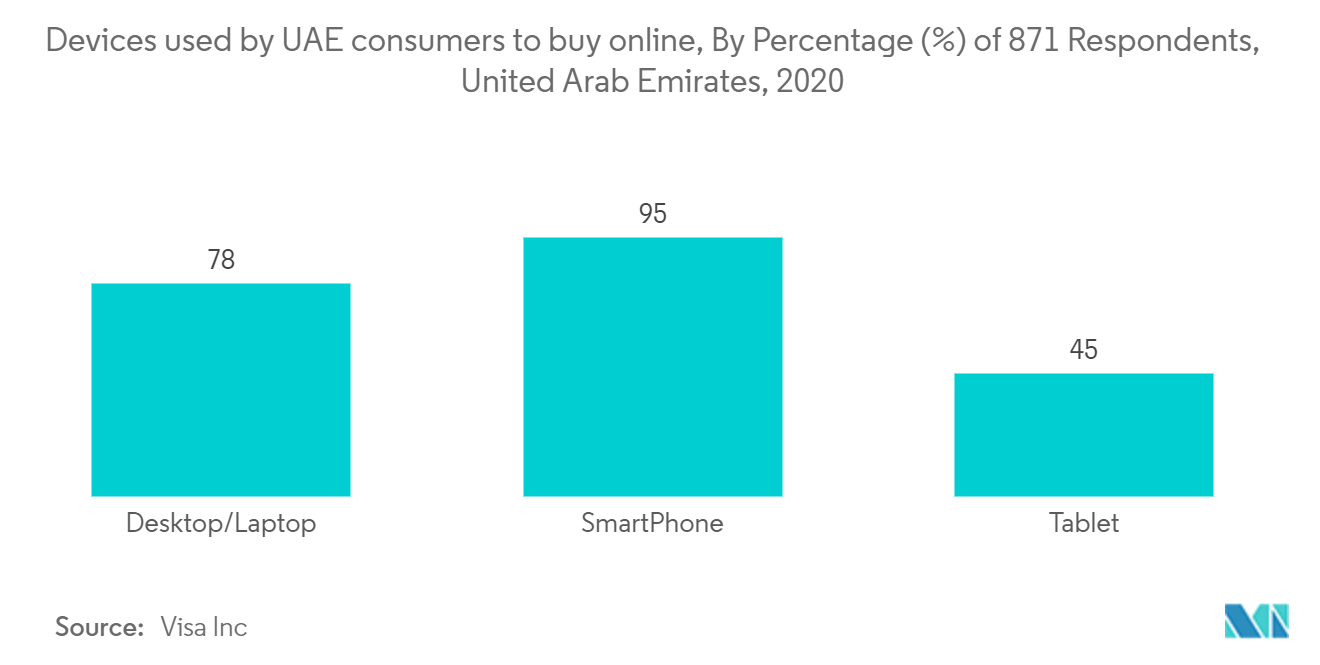Market Trends of Middle East and Africa Real Time Payments Industry
This section covers the major market trends shaping the MEA Real Time Payments Market according to our research experts:
Increased Smartphone Penetration to Drive the Market Growth
- Smartphone adoption in the region continues to grow rapidly as many operators introduce affordable smartphones with more financing options, leading to increased mobile broadband adoption. Over the next five years, there would be about 200 million additional smartphone connections in the region, taking the total to 565 million by the end of 2025, at an adoption rate of almost 80%.
- A recent survey from MasterCard indicates that digital payments in the Middle East will increase rapidly with over 70% and stating that consumers were willing to use mobile phones to make payments. The shift to mobile will be causing a tremendous economic impact.
- Additionally, immediate payment services provide various benefits to consumers and businesses alike. Users can often access such payment systems through mobile apps that allow them to send money to recipients identified by their mobile phone numbers rather than their bank account details. Such services can satisfy consumers who want fast, easy ways to shop online as well as those who use their mobile phones to pay for friends or brick-and-mortar retailers. Such options can spare consumers from carrying cash or cards.
- For instance, Saudi Arabia's telecommunications company launched a digital wallet app, STC Pay, which allows people to send money to other users and pay restaurants and stores digitally.
- Further, in October 2021, Morocco's telecommunication operators announced that they had completed pilot tests for 5G and soon will deploy its own 5G network and seeks to accelerate the region's whole-of-society digital transformation.

United Arab Emirates to hold largest Market share
- As digital payment options continue to grow in popularity, an increasing number of businesses and consumers are expected to adopt these payments in the region. Immediate payment services can confer a multitude of benefits to consumers and businesses. Users can often access such real-time-payment systems via mobile apps that allow them to send money to recipients identified by their mobile phone numbers rather than their bank account details, whereas 71% of UAE consumers are already using digital methods to make payments in stores.
- Businesses also have the opportunity to streamline B2B transactions by pairing real-time payments with digital invoicing options and request-to-pay features. These options could help companies ensure that their payments are attached to relevant data, leading to swifter reconciliation. Accelerated transaction speeds can also help firms better manage liquidity.
- The adoption of E-commerce has been proliferating, which favors the use of digital payments in the region due to the increased convenience and security compared to that when using cash. Consumers also appear to be receptive to the usage of digital payments, as many shoppers turn to e-commerce for their purchasing needs. As Customers were reluctant to purchase from offline stores due to fear of contracting COVID-19 through physical money.
- As the region is operating cross-border, it requires smoother, cheaper, and quicker payment processes. Hence, launching such a real-time payment system in the region is likely to increase and drive market growth.

